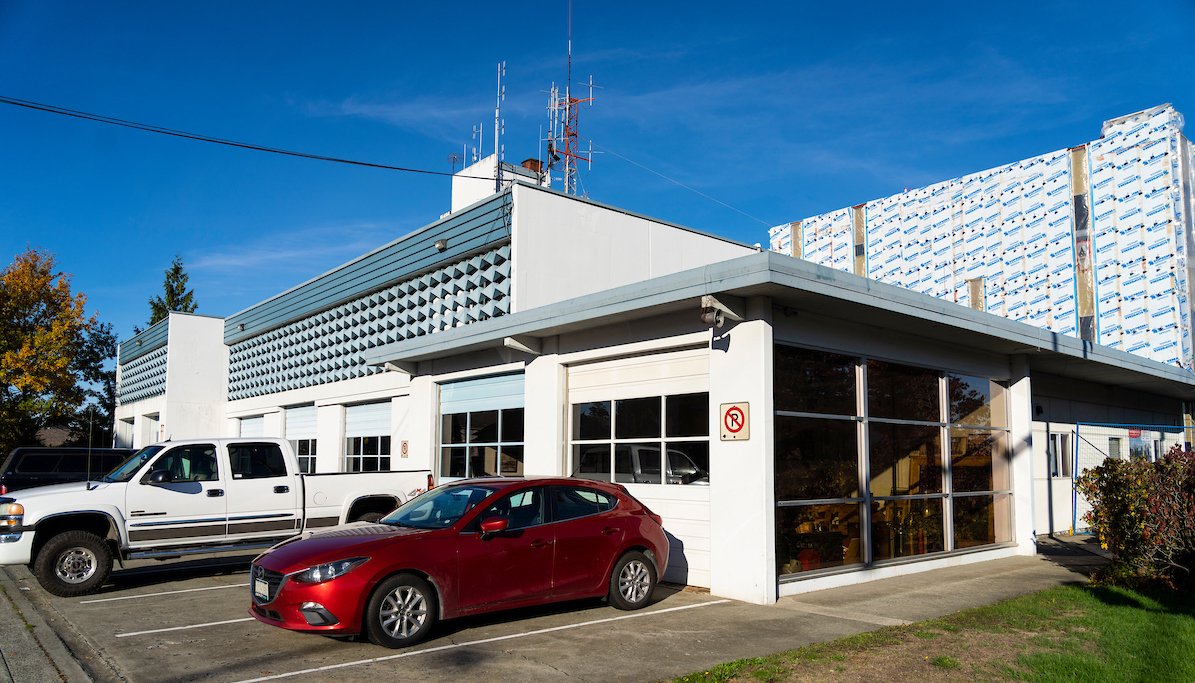
Over 50 years of new technology and updated building codes have emerged over the life of Fire Station #1 in downtown Nanaimo. Built in 1966, the fire hall contains hazardous materials such as PCP, Lead, and Asbestos. The structure leading up to the hose tower has deteriorated to the point of inaccessibility, and the building does not meet current seismic stability standards. In 2019, the City of Nanaimo put plans in place to begin designs of a replacement.

The old fire station with the replacement under construction in the background.
Construction of the new building began in July of 2020 with an expected completion date of September 2022. Original plans for the new building accommodated firefighting, emergency coordination, fire command services, and a dispatch center, although it was later decided to outsource dispatch and repurpose the floor space to a training area and meeting room.
For the sake of emergency response times, Fire Station #1 would not move locations. This meant the construction site of the new building would share a workspace with an active firehall. Material deliveries had to be carefully planned with our contractors as our trucks could not impede traffic and on-site storage space was limited. Windows and doors on the east side of the existing building were removed and filled in with acoustic barriers to prevent construction noise from interrupting normal communication inside.
Since Nanaimo is a coastal city, risk of moisture buildup within the building envelope and corrosion due to salty air is heightened. Convoy needed to meet the product demands of the building specifications and the logistical requirements of sharing a work site with on duty first-responders in a high-traffic area of the Nanaimo core.

Products visible here are SOPRASEAL STICK VP, ACS Thermal Clips, and Rockwool Cavity Rock. When used together, they create a breathable system that allows moisture to release from the wall assembly. ACS Thermal clips are used to reduce thermal bridging and increase the energy efficiency of the building.
We worked with our contractors to ensure we were aware of the project status and their capacity to receive additional materials. Schedules were flexible to support their materials needs and adhere to the traffic standards set forth by the City of Nanaimo. Through our mutual coordination efforts, materials were delivered on time and on budget.
For more information on the project including progress updates and architectural designs, please visit the project page on the City of Nanaimo’s website.